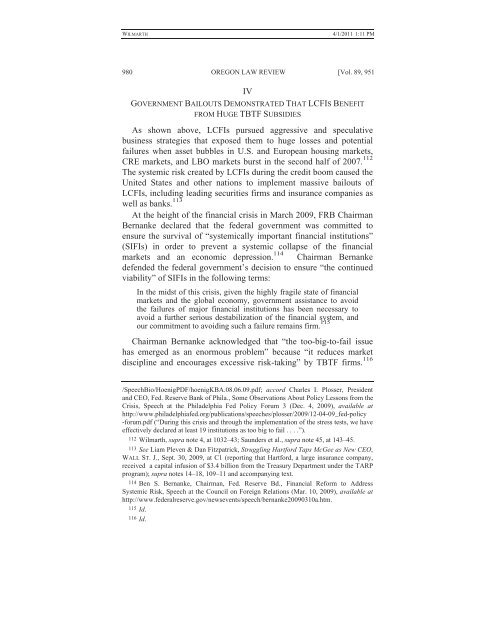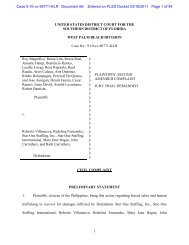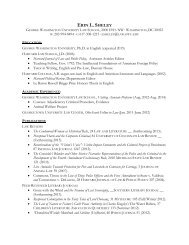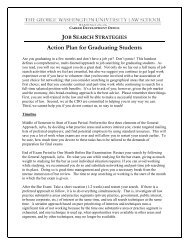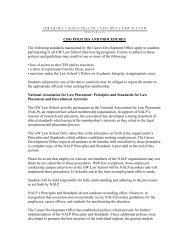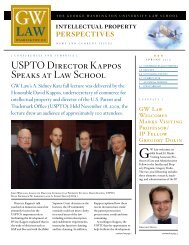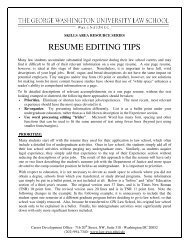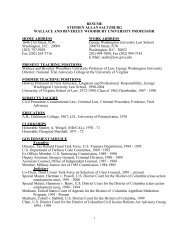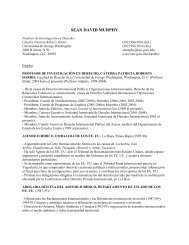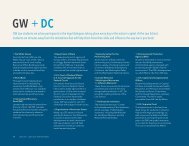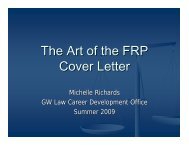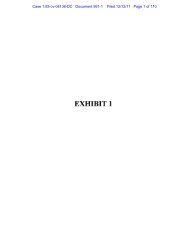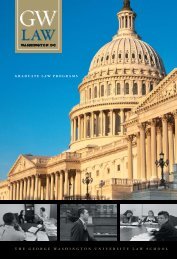CLE Materials for Panel #1 - George Washington University Law ...
CLE Materials for Panel #1 - George Washington University Law ...
CLE Materials for Panel #1 - George Washington University Law ...
You also want an ePaper? Increase the reach of your titles
YUMPU automatically turns print PDFs into web optimized ePapers that Google loves.
WILMARTH<br />
4/1/2011 1:11 PM<br />
980 OREGON LAW REVIEW [Vol. 89, 951<br />
IV<br />
GOVERNMENT BAILOUTS DEMONSTRATED THAT LCFIS BENEFIT<br />
FROM HUGE TBTF SUBSIDIES<br />
As shown above, LCFIs pursued aggressive and speculative<br />
business strategies that exposed them to huge losses and potential<br />
failures when asset bubbles in U.S. and European housing markets,<br />
CRE markets, and LBO markets burst in the second half of 2007. 112<br />
The systemic risk created by LCFIs during the credit boom caused the<br />
United States and other nations to implement massive bailouts of<br />
LCFIs, including leading securities firms and insurance companies as<br />
well as banks. 113<br />
At the height of the financial crisis in March 2009, FRB Chairman<br />
Bernanke declared that the federal government was committed to<br />
ensure the survival of “systemically important financial institutions”<br />
(SIFIs) in order to prevent a systemic collapse of the financial<br />
markets and an economic depression. 114 Chairman Bernanke<br />
defended the federal government’s decision to ensure “the continued<br />
viability” of SIFIs in the following terms:<br />
In the midst of this crisis, given the highly fragile state of financial<br />
markets and the global economy, government assistance to avoid<br />
the failures of major financial institutions has been necessary to<br />
avoid a further serious destabilization of the financial system, and<br />
our commitment to avoiding such a failure remains firm. 115<br />
Chairman Bernanke acknowledged that “the too-big-to-fail issue<br />
has emerged as an enormous problem” because “it reduces market<br />
discipline and encourages excessive risk-taking” by TBTF firms. 116<br />
/SpeechBio/HoenigPDF/hoenigKBA.08.06.09.pdf; accord Charles I. Plosser, President<br />
and CEO, Fed. Reserve Bank of Phila., Some Observations About Policy Lessons from the<br />
Crisis, Speech at the Philadelphia Fed Policy Forum 3 (Dec. 4, 2009), available at<br />
http://www.philadelphiafed.org/publications/speeches/plosser/2009/12-04-09_fed-policy<br />
-<strong>for</strong>um.pdf (“During this crisis and through the implementation of the stress tests, we have<br />
effectively declared at least 19 institutions as too big to fail . . . .”).<br />
112 Wilmarth, supra note 4, at 1032–43; Saunders et al., supra note 45, at 143–45.<br />
113 See Liam Pleven & Dan Fitzpatrick, Struggling Hart<strong>for</strong>d Taps McGee as New CEO,<br />
WALL ST. J., Sept. 30, 2009, at C1 (reporting that Hart<strong>for</strong>d, a large insurance company,<br />
received a capital infusion of $3.4 billion from the Treasury Department under the TARP<br />
program); supra notes 14–18, 109–11 and accompanying text.<br />
114 Ben S. Bernanke, Chairman, Fed. Reserve Bd., Financial Re<strong>for</strong>m to Address<br />
Systemic Risk, Speech at the Council on Foreign Relations (Mar. 10, 2009), available at<br />
http://www.federalreserve.gov/newsevents/speech/bernanke20090310a.htm.<br />
115 Id.<br />
116 Id.


